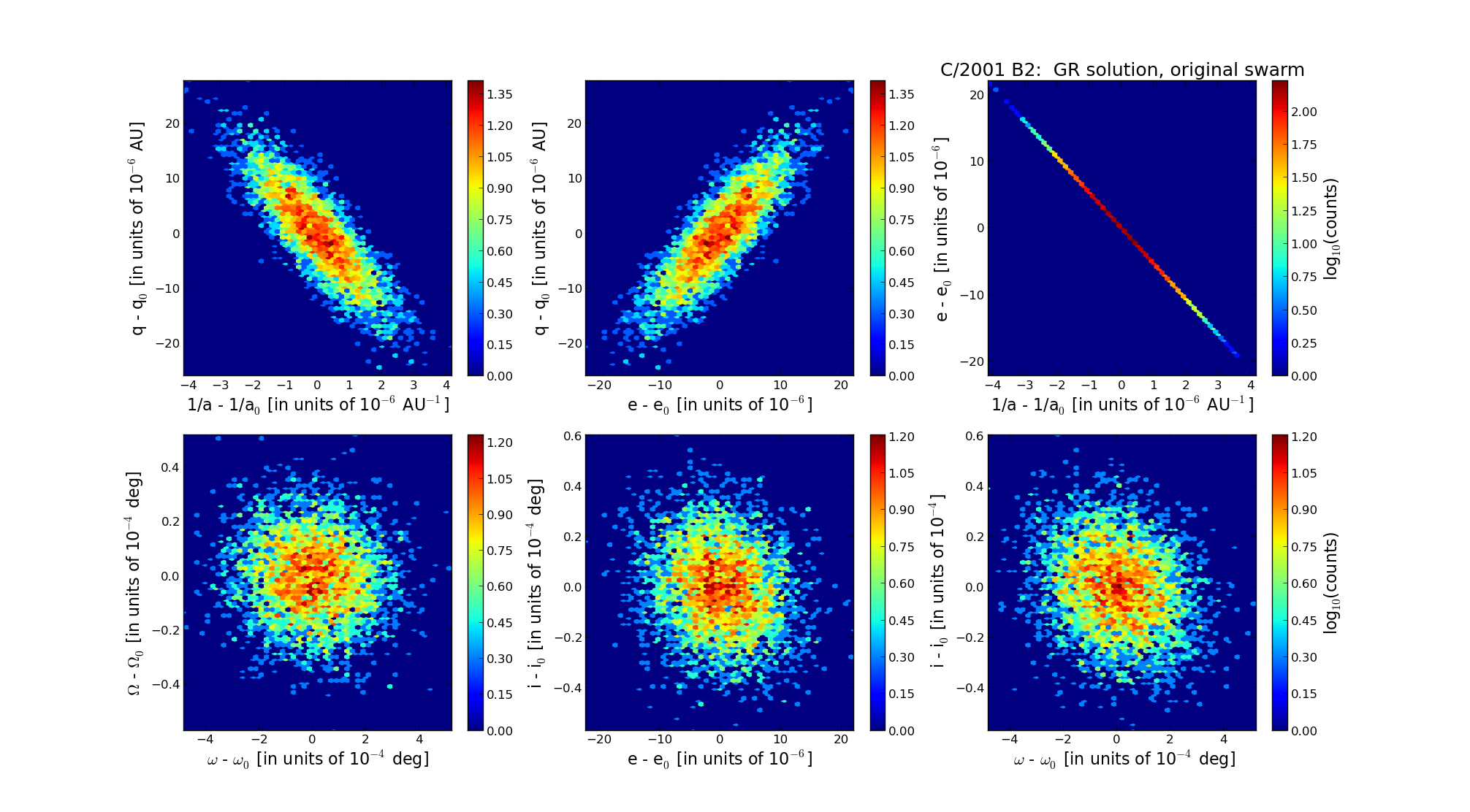C/2001 B2 NEAT
more info
Comet C/2001 B2 was discovered on 24 January 2001, almost five months after perihelion passage, and next observed 3.1 yr during its four oppositions in a range of heliocentric distances: 5.42 au – 5.306 au (perihelion) – 10.23 au.
Comet had its closest approaches to the Earth on 26 April 2000 (4.526 au, more than 4 months before perihelion passage) and on 11 March 2001 (4.550 au, less than two months after discovery).
This comet suffers small planetary perturbations during its passage through the planetary system that lead to a more tight future orbit (see future barycentric orbit).
See also Królikowska and Dybczyński 2017.
Comet had its closest approaches to the Earth on 26 April 2000 (4.526 au, more than 4 months before perihelion passage) and on 11 March 2001 (4.550 au, less than two months after discovery).
This comet suffers small planetary perturbations during its passage through the planetary system that lead to a more tight future orbit (see future barycentric orbit).
See also Królikowska and Dybczyński 2017.
| solution description | ||
|---|---|---|
| number of observations | 587 | |
| data interval | 2001 01 24 – 2004 02 21 | |
| data type | observed only after perihelion (POST) | |
| data arc selection | entire data set (STD) | |
| range of heliocentric distances | 5.42 au – 8.11au | |
| detectability of NG effects in the comet's motion | NG effects not determinable | |
| type of model of motion | GR - gravitational orbit | |
| data weighting | YES | |
| number of residuals | 1153 | |
| RMS [arcseconds] | 0.59 | |
| orbit quality class | 1a | |
| orbital elements (barycentric ecliptic J2000) | ||
|---|---|---|
| Epoch | 1692 08 17 | |
| perihelion date | 2000 09 02.44723646 | ± 0.00117264 |
| perihelion distance [au] | 5.31118408 | ± 0.00000768 |
| eccentricity | 0.99894149 | ± 0.00000585 |
| argument of perihelion [°] | 304.818452 | ± 0.000140 |
| ascending node [°] | 145.086621 | ± 0.000014 |
| inclination [°] | 150.633002 | ± 0.000016 |
| reciprocal semi-major axis [10-6 au-1] | 199.30 | ± 1.10 |
| file containing 5001 VCs swarm |
|---|
| 2001b2a5.bmi |

